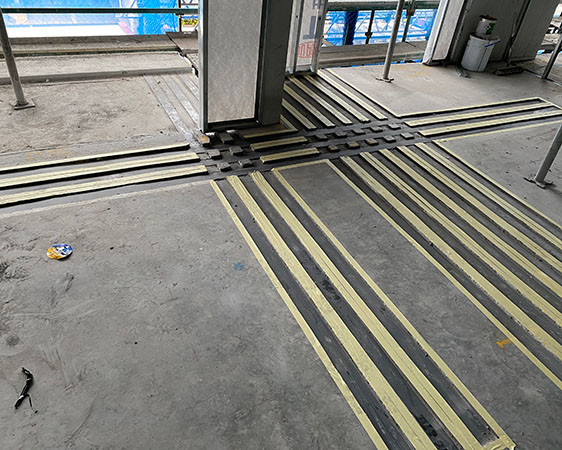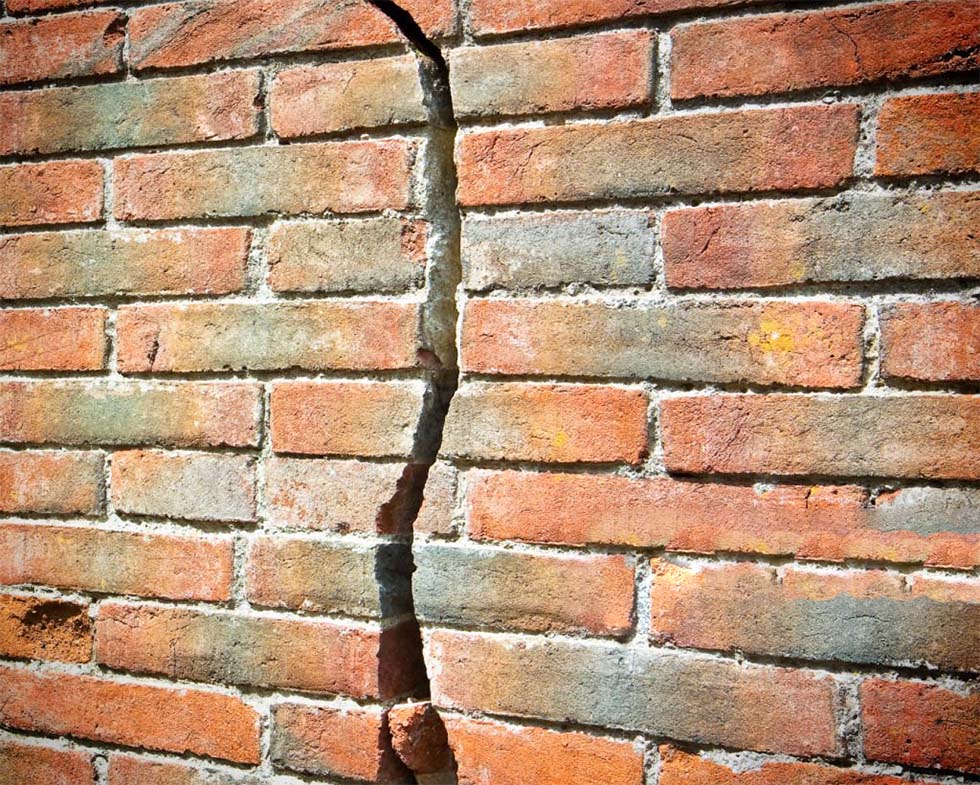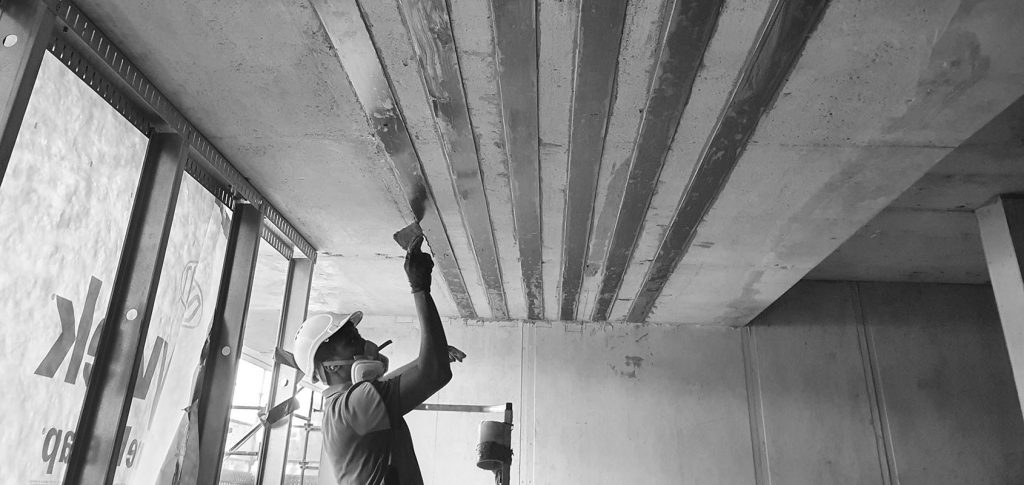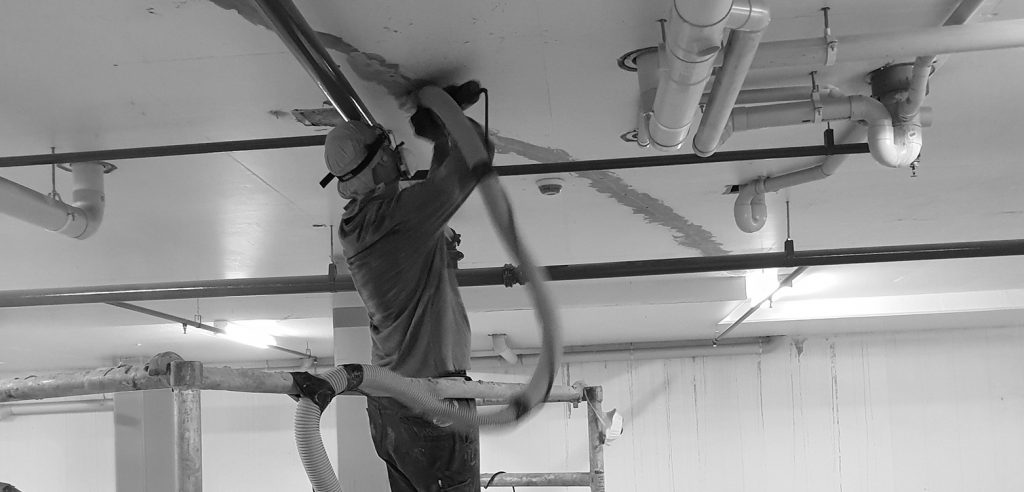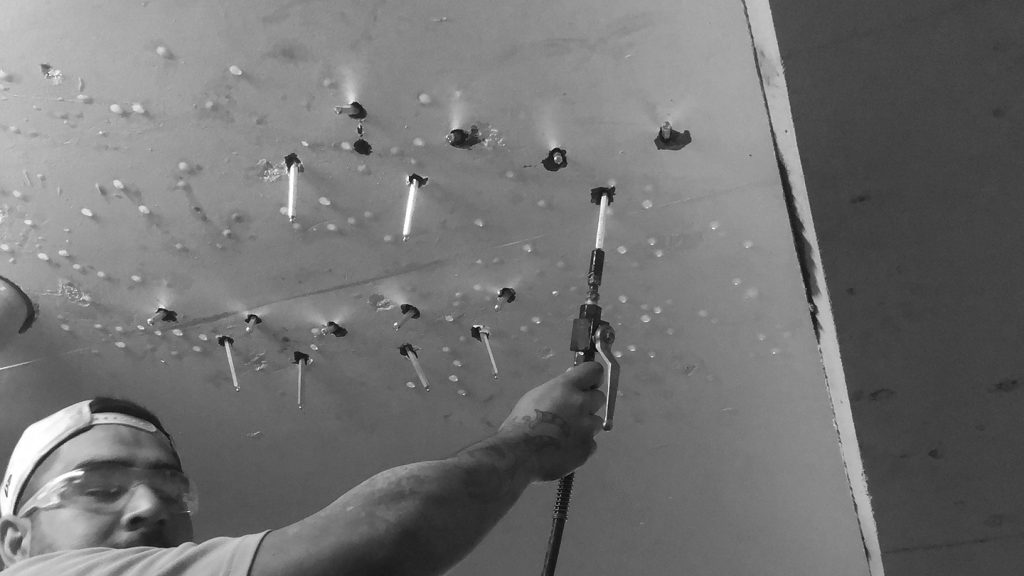PROCESS: EPOXY CRACK INJECTION
FCS Concrete Repairs successfully tendered to repair the concrete base slab in a water tank at the Bingara Gorge.
Our client advised FCS Concrete Repairs that there was considerable fine cracking and repairs were necessary to prevent further expansion of the cracking, water leakage and possible failure of the tank base slab.
Cracking in the concrete base slab floor extended through to the external plinth of the base slab.
Some key factors considered in determining the most appropriate repair methodology included:
- Width of cracking in concrete base slab.
- Structural integrity.
- Stability of base slab.
- Degree of movement, if any, in base slab.
- Need to consolidate the structure.
- Need to exclude water (or air) from contact with steel reinforcement.
- Structural or flexible repair required.
- Chemical nature of liquid stored.
- Strength and durability of concrete base slab.
- Old or new concrete in the base slab.
Based on these key factors FCS Concrete Repairs recommended the use of the Fosroc epoxy injection system TO SEAL AND STRUCTURALLY REPAIR the base slab.
The materials used were Fosroc Nitomortar AP and Nitofill LV TDS.
Fosroc Nitomortar AP was used to seal the cracks at the surface while Fosroc Nitofill LV was injected into the underlying cracks after the Nitomortar had cured.
The detailed repair process carried out by experienced trained FCS Concrete Repairs staff was as follows:
- Chase cracks with a V-cut blade to 10mm depth.
- Clean the crack and the surrounding slab surface, remove any loose material from the crack.
- Cap/Seal the crack using Fosroc Nitomortar AP.
Fosroc Nitomortar AP is a versatile two-component, epoxy paste consistency, structural adhesive/filler. It cures, with minimal shrinkage, at temperatures above 5°C to a very strong, dense solid.
The mixed material is applied to a suitably prepared surface and quickly cures to form a complete impermeable repair unaffected by many forms of chemical attack. It is supplied as a two pack colour coded material in pre-weighed quantities ready for on-site mixing and use.
The pot life at 25°C is 60 minutes, initial hardness is 5 hours at 20°C and the mortar is fully cured at 7 days at 20°C.
- Apply the mortar along the crack leaving openings at between 20 cm intervals for injection ports to be fixed to the crack. This depends on the crack size along the length of the crack.
- Smooth the mortar into and along the crack using a spatula ensuring that the mortar penetrates into the crack and that the points for the injection ports are open and clear.
- Use the mortar as an adhesive to attach the injection ports at each injection point and ensure that the crack is completely sealed and the port is clear and centred over the crack.
- Allow the mortar to cure for five (5) hours before starting the injection process.
- Curing is dependent on temperature as noted above. Curing time will be increased at temperatures below 20°C.
- SAFETY INSTRUCTION: Use protective glasses during the injection process.
- Fosroc Nitofill LV cartridges were used for the low pressure epoxy crack injection process.
Nitofill LV is a two part epoxy base and hardener designed for injecting cracks in concrete and masonry where there is a need to consolidate a structure or exclude water and air from contact with the reinforcement.
Nitofill LV is a high strength, low viscosity resin injection system and provides excellent bond to concrete and masonry.
Nitofill LV cartridge pack accessory items are available separately and comprise a cartridge gun, static mixer, nozzle hoses, injection flanges, flange adaptors and flange removing tool.
- The Nitofill LV crack injection system process involves inserting the two part Nitofill cartridge into the cartridge gun after attaching the static mixer hose and adaptor.
- The adaptor is then connected to the installed port or flange.
- Nitofill LV was then injected from the cartridge through the port and into the crack until resin flows from an adjacent port.
- The port is the closed the prevent leakage and the process is repeated at the next and succeeding ports until the entire crack is filled.
- After the injection resin has set, atleast one (1) hours, the ports/flanges are removed using the removing tool.
- Nitomortar is then used to fill any remaining surface indentations.
- Subsequently any excess mortar was removed using a grinder until the original substrate profile was restored.
RESULT: The end result was that the water tank floor substrate was sealed and structurallyrepaired and the tank repair was completely watertight and structurally sound.



